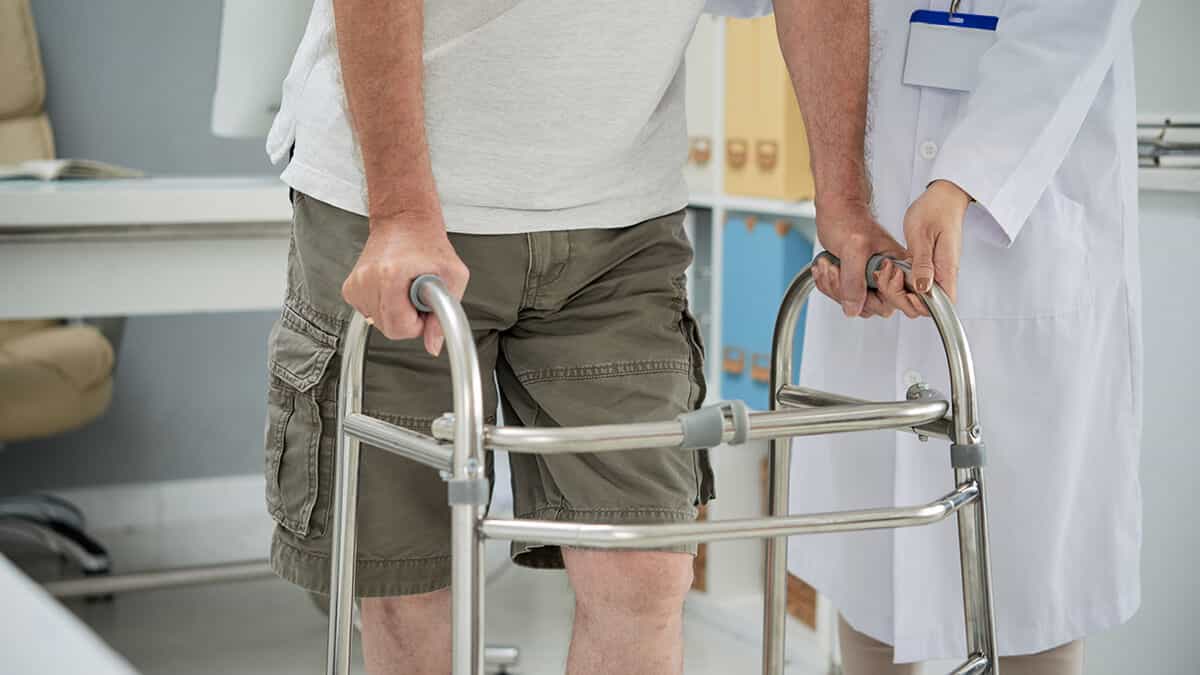In this guide
Imagine for a moment what would happen if an illness or disabling injury meant you couldn’t ever work again.
For most of us, the financial picture would be bleak.
It’s just that scenario that total and permanent disability (TPD) insurance available through your super fund is designed to address.
What is TPD insurance?
Total and permanent disability insurance pays a lump sum if you are sick or injured and unlikely to be able to return to work. Some policies pay a series of instalments instead of a single lump sum.
For you to receive a payment, the insurer must be satisfied that you meet the definition of TPD in the insurance policy.
The two most common TPD definitions are known as ‘own occupation’ and ‘any occupation’.
‘Own occupation’ means your illness or injury is likely to prevent you from returning to your own job – generally the occupation you were performing immediately prior to your disability. This definition is not available when your insurance is held in a super fund unless you already had the policy before 1 July 2014.
‘Any occupation’ means you are unlikely to return to any occupation that suits your education, training or experience. If you can’t return to the job you were doing before your disability but have suitable experience and skills to get a different job, then a TPD policy using the any occupation definition would not make a payment to you.
Other definitions are often used if you were not working or were working limited hours immediately prior to your disability. These can include:
- Cognitive loss
- Loss of limbs/eyesight
- Activities of daily living – the loss of abilities like dressing, showering and eating independently
- Activities of daily working – the loss of abilities like walking, communication, lifting, hearing and manual dexterity.
It is important to read the product disclosure statement (PDS) that explains the insurance cover you have or are applying for to understand what each definition is and when they apply, as well as the other terms and conditions. You can usually find this information in the insurance guide that forms part of your super fund’s PDS.
If you need cover with an own occupation definition, you must apply for it outside your super fund.
The expenses that your TPD policy should cover
For financial security, the amount of cover you choose should be enough to:
- Pay off any debts
- Provide necessary income for ongoing living costs that you have not covered with an income protection policy, from your current age until retirement age
- Cover lump sum expenses associated with modifying your home to accommodate a disability
- Meet the cost of future out-of-pocket medical expenses, such as in-home nursing care.
Since none of us are psychic, we can’t know for sure what future home modifications or medical needs will cost for an injury or illness we haven’t yet developed. The sum you choose to set aside for these costs is personal and depends on what is enough to put your mind at ease, but not so much that your insurance premium is unaffordable.
TPD cover and income protection insurance work together, and you can receive payments from both if your illness or injury means you are unlikely to return to work. The level of income protection you have and the period it will continue to provide payments determines whether your TPD policy needs to include an allowance for future income, and how much.
Remember that if you plan to use your TPD payout to pay off debts, then the income you need may be lower than it was prior to your disability because you will no longer need to make repayments.
And then there’s tax. As TPD payments from super are taxable, you may need to increase your cover so the amount you receive after tax is sufficient for your needs. Outside super, TPD payments are tax free.
Example: TPD with long-term income protection
Amanda, 45, is married and has two children aged 11 and 14. She earns $95,000 per year working full time. The family’s only debt is the mortgage on their home, which stands at $520,000.
Amanda has an income protection policy for 75% of her income plus a further 12% superannuation contribution. The benefit period is to age 65. If Amanda is permanently disabled today, the policy will provide her with income and pay into her super for the next 20 years, between age 45 and 65.
For TPD, Amanda wants enough cover to pay off the mortgage. She doesn’t feel the need to include an allowance for future income because without a mortgage to pay she is confident that the 75% of her prior salary provided by income protection will be enough, particularly since her husband will continue to work and earn income to support the family. She will also include $150,000 for home modifications and medical costs.
Amanda decides she is comfortable with TPD cover of $670,000.
When she turns 65 and her income protection payments stop, she will have her super balance to draw on for future income needs.
Example: Short-term income protection
Semisi, 50, is single and earns $120,000 per year. He currently doesn’t have any TPD or income protection insurance, and his mortgage is $350,000. He has no other debts.
After investigating costs, Semisi has found that long-term income protection is more expensive for him than using TPD cover to provide for his future income needs.
He decides to apply for the following cover:
- Income protection for 75% of salary and a 12% super contribution with a benefit period of two years
- TPD cover of $910,000 ($350,000 for the mortgage, $470,000 to invest for future income needs after two years of income protection, and $80,000 for medical and home modification expenses).
Semisi has chosen a lump sum sufficient to provide his income needs from age 52 to 67, considering that he will no longer have a mortgage.
He will start drawing on his super balance after turning 67 and will also be eligible for a partial Age Pension at that time.
Help calculating the TPD cover you need
Now you know what expenses to consider, how can you then decide the dollar figure of TPD insurance to apply for?
Estimating the debts you’ll need to repay is usually straightforward, but working out the lump sum you’ll need to invest now to fund your future income is trickier.
Thankfully, an insurance calculator or your financial planner can help.
Check whether your super fund provides an insurance needs calculator that can give you a tailored result based on the cover your fund offers. These tools can often also tell you what the cover would cost with them.
Alternatively, we found a helpful tool provided by AIA, one of Australia’s largest life insurers. This calculator considers the income your selected income protection will provide and adjusts your required TPD cover accordingly. You can choose between income protection benefit periods of two years, five years and to age 65. The tool also assumes you or your family will use your assets (including your super balance) to help repay your debts if you become permanently disabled or die. If you want to keep your assets for the future instead, you can adjust the sum insured for debt repayment in your results.
Visit the AIA insurance needs calculator.
Adjusting your cover to allow for tax
Holding TPD cover in your super account is convenient because premiums can come out of your balance. You can also make concessional contributions to super from your pre-tax income (salary-sacrifice or personal deductible contributions) to cover the cost, effectively making your premiums tax deductible. Outside super, TPD premiums are not tax deductible.
One downside is that if you make a successful TPD claim, the amount is taxable when you withdraw it from super before your 60th birthday. The tax you pay depends on your age when you were disabled, the eligible service date on the super account you’re withdrawing from, the existing tax components in your account and whether you withdraw a lump sum, a regular income stream or a combination of both.
With so many moving parts, there is no easy rule of thumb to estimate the cover you need for the after-tax amount you require.
To help you, we’ve created a calculator that will estimate the amount of TPD cover required in super to provide the amount you’ve chosen as a lump sum after tax is paid.



Leave a Reply
You must be logged in to post a comment.